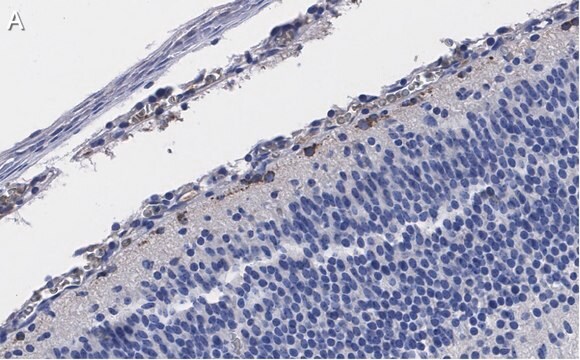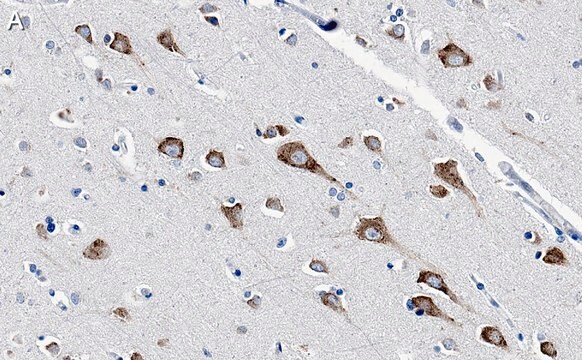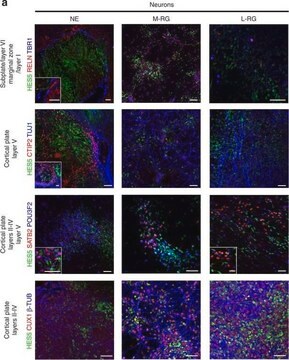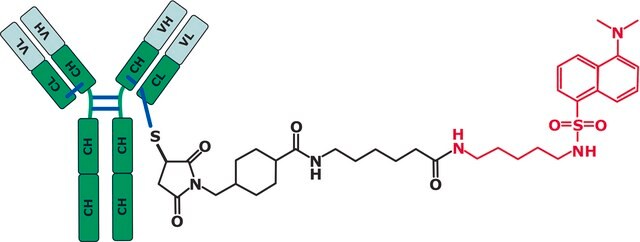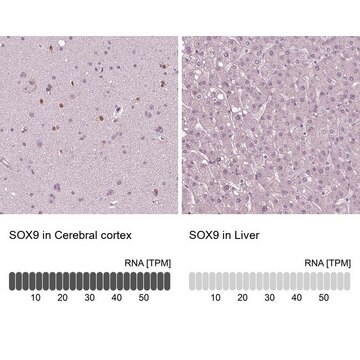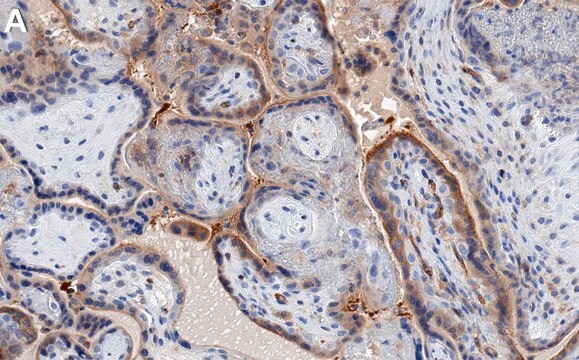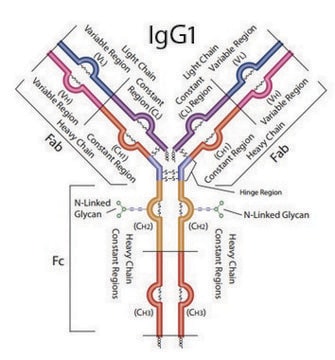Description générale
We are committed to bringing you greener alternative products, which adhere to one or more of The 12 Principles of Green Chemistry. This antibody is Preservative-free, produced without the harm or sacrifice of animals and exceptionally stable to allow for ambient shipping and storage if needed and thus aligns with "Waste Prevention", "Designing Safer Chemicals" and "Design for Energy Efficiency".
Click here for more information.
ZooMAb® antibodies represent an entirely new generation of recombinant monoclonal antibodies. Each ZooMAb® antibody is manufactured using our proprietary recombinant expression system, purified to homogeneity, and precisely dispensed to produce robust and highly reproducible lot-to-lot consistency. Only top-performing clones are released for use by researchers. Each antibody is validated for high specificity and affinity across multiple applications, including its most commonly used application. ZooMAb® antibodies are reliably available and ready to ship when you need them.
Spécificité
Clone 142 is a ZooMAb® mouse recombinant monoclonal antibody that specifically detects Reelin. It targets an epitope within 26 amino acids from the N-terminal region.
Immunogène
Recombinant fragment corresponding to 150 amino acids from the N-terminal region of human Reelin.
Application
Quality Control Testing
Evaluated by Western Blotting in HepG2 cell lysate.
Western Blotting Analysis: A 1:10,000 dilution of this antibody detected Reelin in HepG2 cell lysate.
Tested Applications
Immunohistochemistry (Paraffin) Analysis: A 1:1,000 dilution from a representative lot detected Reelin in mouse brain tissue sections.
Immunofluorescence Analysis: A 1:1,000 dilution from a representative lot detected Reelin in mouse brain tissue sections.
Note: Actual optimal working dilutions must be determined by end user as specimens, and experimental conditions may vary with the end user.
Description de la cible
Reelin (UniProt: P78509; also known as RELN) is encoded by the RELN gene (Gene ID: 5649) in human.Reelin is a large extracellular matrix glycoprotein with serine protease activity. It is synthesized with a signal peptide (aa 1-25) that is subsequently cleaved off to produce the mature form that contains 8 EGF-like domains. Its Reelin domain is located in amino acids 26-190. Reelin plays a role in brain development, neuronal migration, and layering of neurons in the cerebral cortex and cerebellum. It is abundantly produced during brain ontogenesis by the Cajal-Retzius cells and other neurons located in the telencephalic marginal zone and by granule cells of the external granular layer of the cerebellum. In the adult brain, it is preferentially expressed in GABAergic interneurons of prefrontal cortices, temporal cortex, hippocampus, and glutamatergic granule cells of cerebellum. It is also expressed in the retina, liver, thyroid gland, adrenal gland, fallopian tube, and breast tissue. Reelin is shown to regulate the positioning of neurons and participates in neurotransmission and memory formation. It also regulates microtubule function in neurons and neuronal migration and affects migration of sympathetic preganglionic neurons in the spinal cord, where it seems to act as a barrier to neuronal migration. Reelin participates in canonical signaling via binding to VLDL receptor and apolipoprotein E receptor 2 and induces tyrosine phosphorylation of the adaptor protein disabled 1 (Dab1) by Src kinases. Phosphorylated Dab1 in-turn activates downstream signaling, including the PI3-kinase-dependent pathways. Mutations in RELN gene have been linked to familial temporal lobe epilepsy and Lissencephaly that is associated with ataxia, mental retardation, and seizures. This ZooMAb® recombinant monoclonal antibody, generated by our propriety technology, offers significantly enhanced specificity, affinity, reproducibility, and stability over conventional monoclonals. (Ref.: Mikulska-Ruminska, K., et al. (2019). Sci. Rep. 9; 18974; Dlugosz, P. and Nimpf, J. (2018). J. Mol. Sci. 19(10); E3090; Ranaivoson, FM., et al. (2016). Front. Cell Neurosci. 10; 137).
Forme physique
Purified recombinant mouse monoclonal antibody IgG, lyophilized in PBS, 5% Trehalose, normal appearance a coarse or translucent resin. The PBS/trehalose components in the ZooMAb formulation can have the appearance of a semi-solid (bead like gel) after lyophilization. This is a normal phenomenon. Please follow the recommended reconstitution procedure in the data sheet to dissolve the semi-solid, bead-like, gel-appearing material. The resulting antibody solution is completely stable and functional as proven by full functional testing. Contains no biocide or preservatives, such as azide, or any animal by-products. Larger pack sizes provided as multiples of 25 µL.
Reconstitution
0.3 mg/mL after reconstitution at 25 µL per vial. Please refer to guidance on suggested starting dilutions and/or titers per application and sample type.
Stockage et stabilité
Recommend storage of lyophilized product at 2-8°C; Before reconstitution, micro-centrifuge vials briefly to spin down material to bottom of the vial; Reconstitute each vial by adding 25 µL of filtered lab grade water or PBS; Reconstituted antibodies can be stored at 2-8°C, or -20°C for long term storage. Avoid repeated freeze-thaws.
Autres remarques
Concentration: Please refer to the Certificate of Analysis for the lot-specific concentration.
Informations légales
ZooMAb is a registered trademark of Merck KGaA, Darmstadt, Germany
Clause de non-responsabilité
Unless otherwise stated in our catalog or other company documentation accompanying the product(s), our products are intended for research use only and are not to be used for any other purpose, which includes but is not limited to, unauthorized commercial uses, in vitro diagnostic uses, ex vivo or in vivo therapeutic uses or any type of consumption or application to humans or animals.

